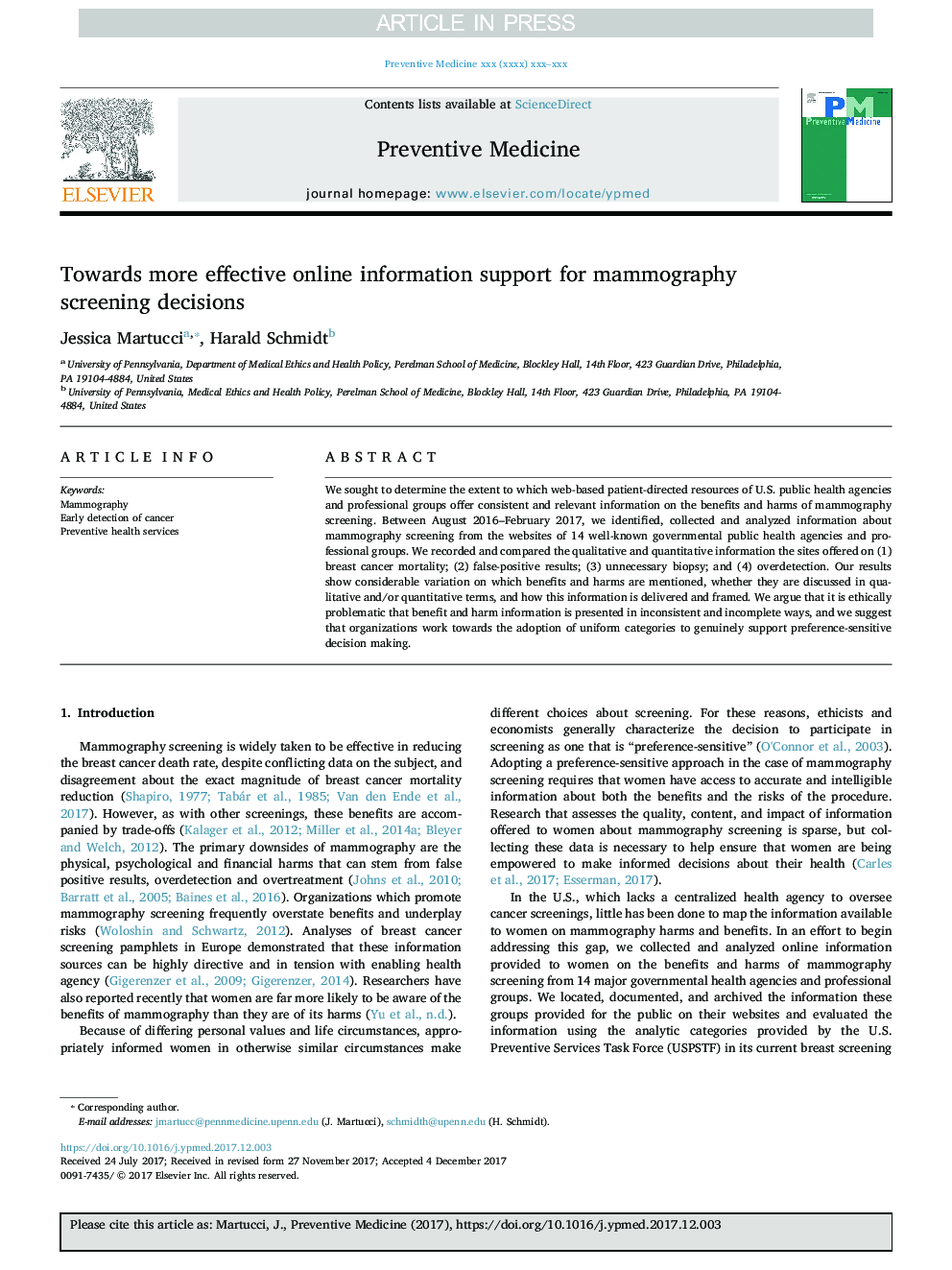| Article ID | Journal | Published Year | Pages | File Type |
|---|---|---|---|---|
| 8693617 | Preventive Medicine | 2018 | 6 Pages |
Abstract
We sought to determine the extent to which web-based patient-directed resources of U.S. public health agencies and professional groups offer consistent and relevant information on the benefits and harms of mammography screening. Between August 2016-February 2017, we identified, collected and analyzed information about mammography screening from the websites of 14 well-known governmental public health agencies and professional groups. We recorded and compared the qualitative and quantitative information the sites offered on (1) breast cancer mortality; (2) false-positive results; (3) unnecessary biopsy; and (4) overdetection. Our results show considerable variation on which benefits and harms are mentioned, whether they are discussed in qualitative and/or quantitative terms, and how this information is delivered and framed. We argue that it is ethically problematic that benefit and harm information is presented in inconsistent and incomplete ways, and we suggest that organizations work towards the adoption of uniform categories to genuinely support preference-sensitive decision making.
Related Topics
Health Sciences
Medicine and Dentistry
Complementary and Alternative Medicine
Authors
Jessica Martucci, Harald Schmidt,
